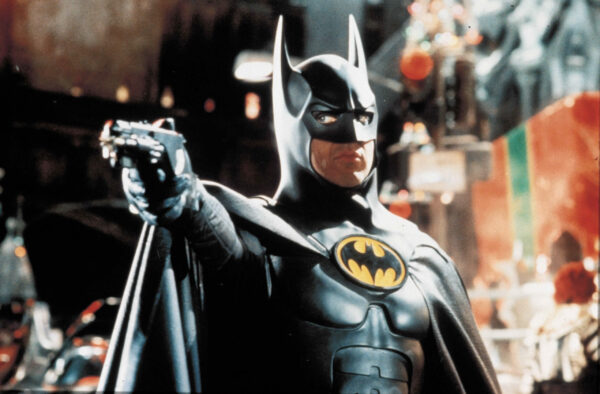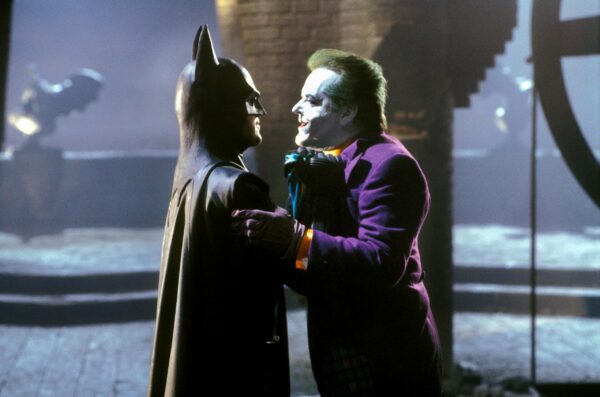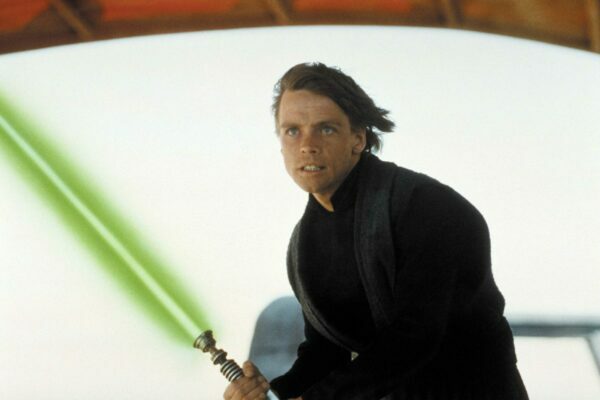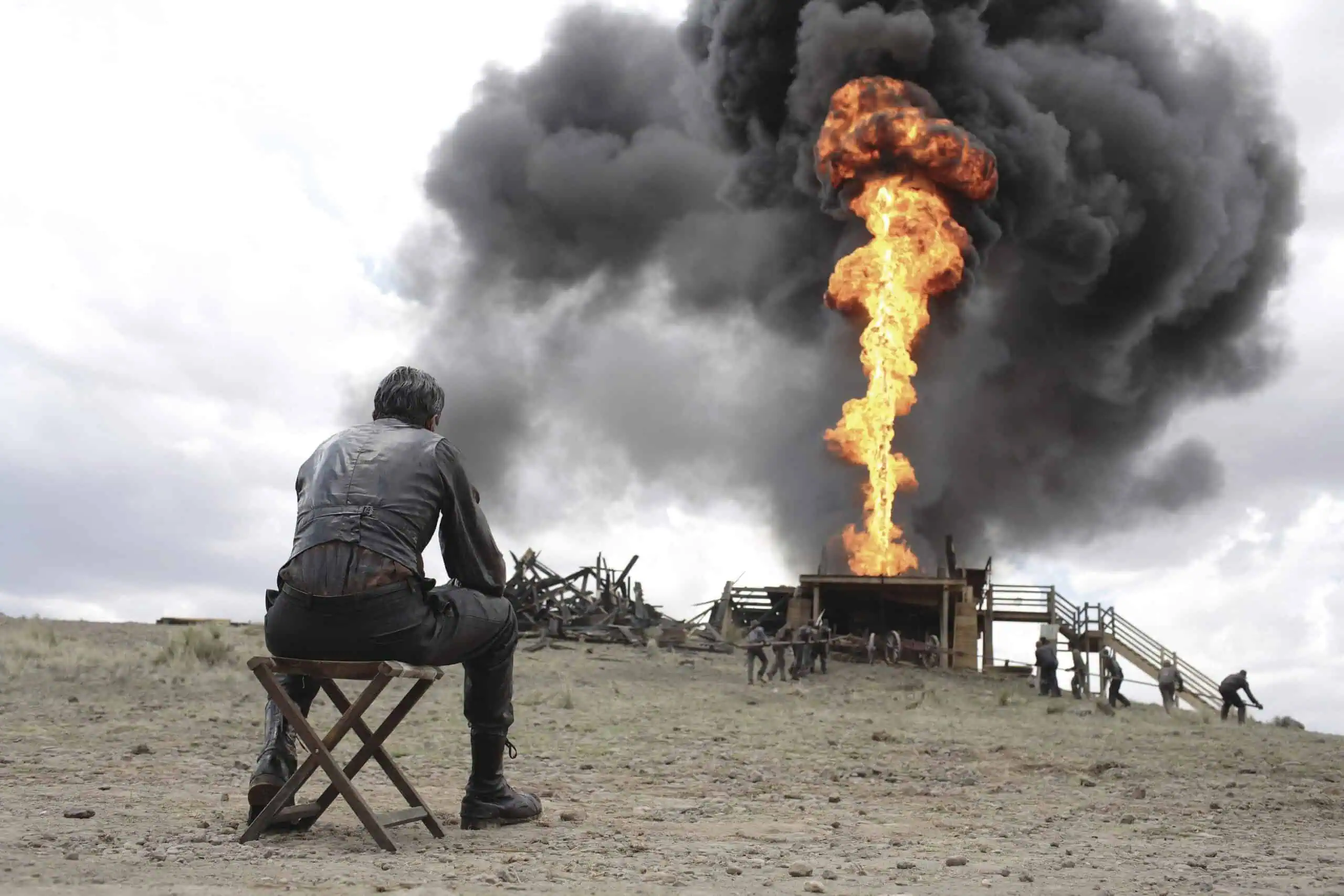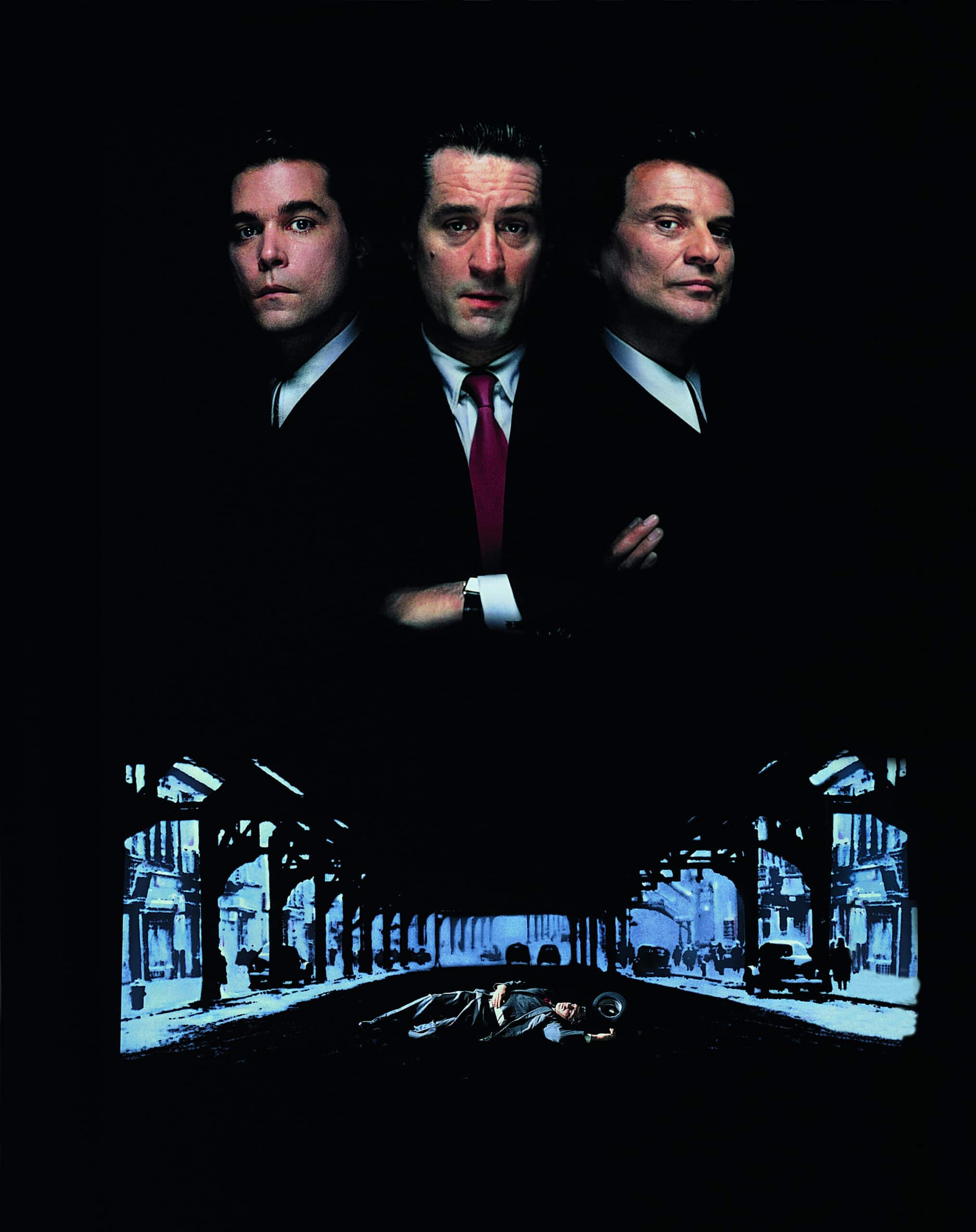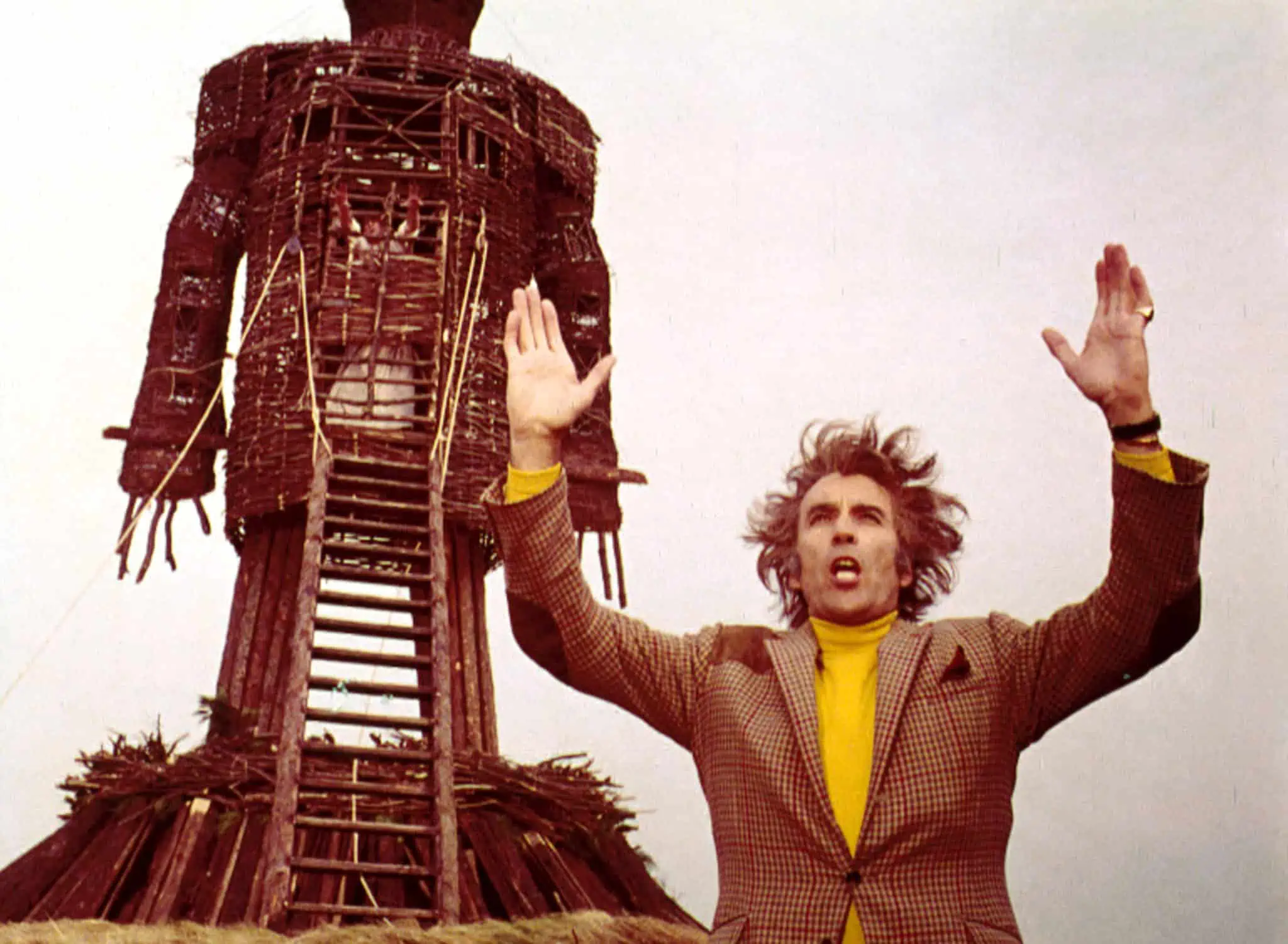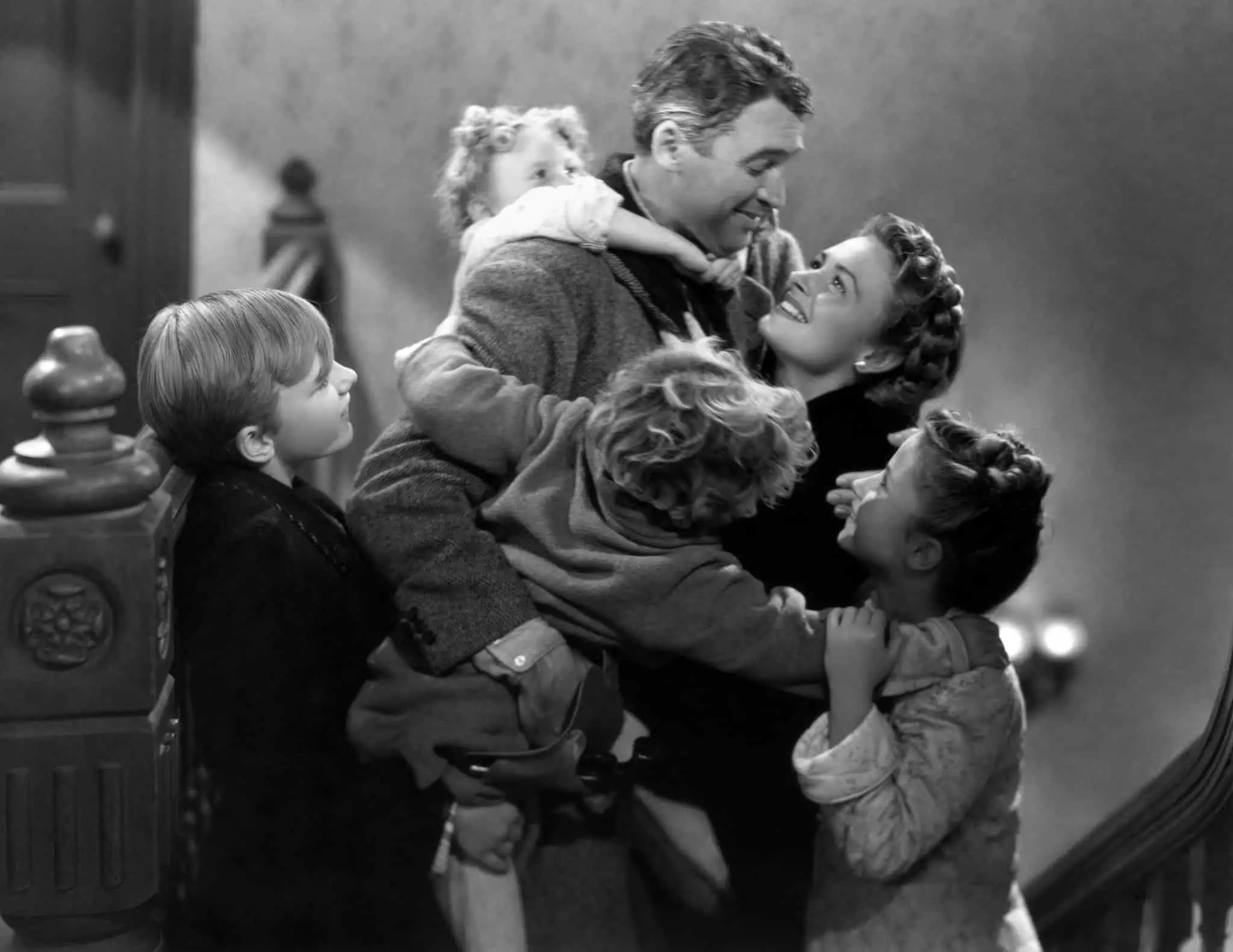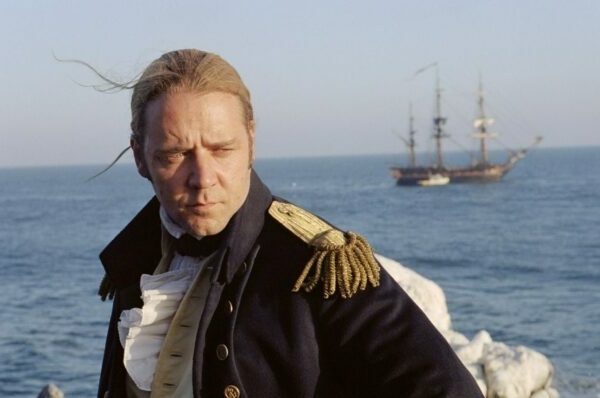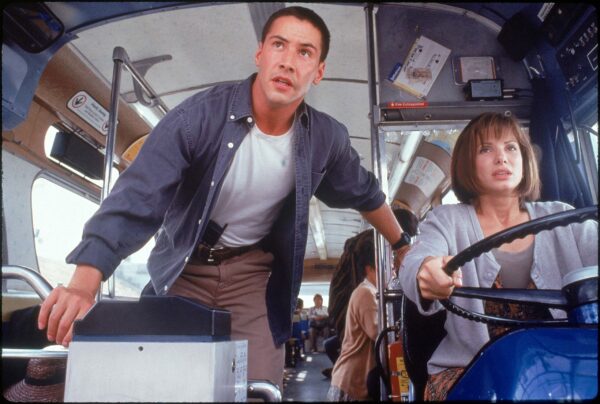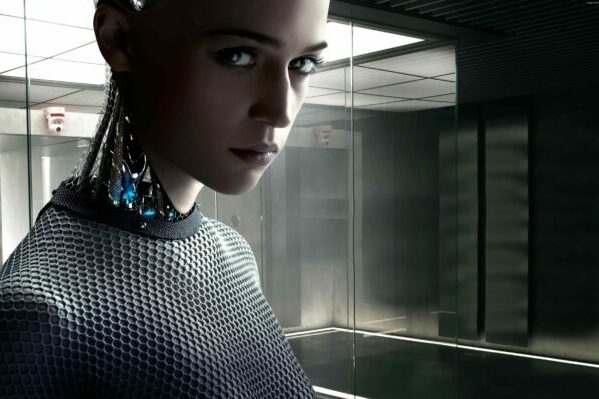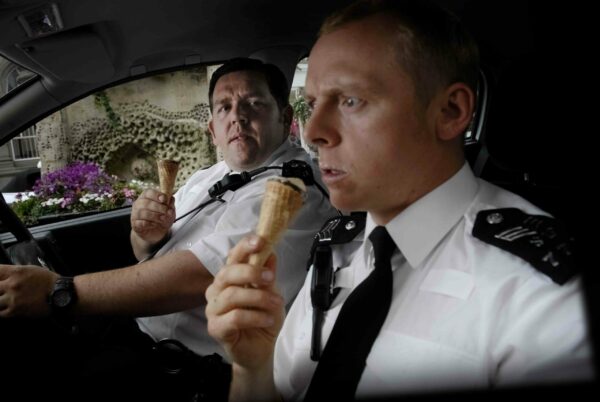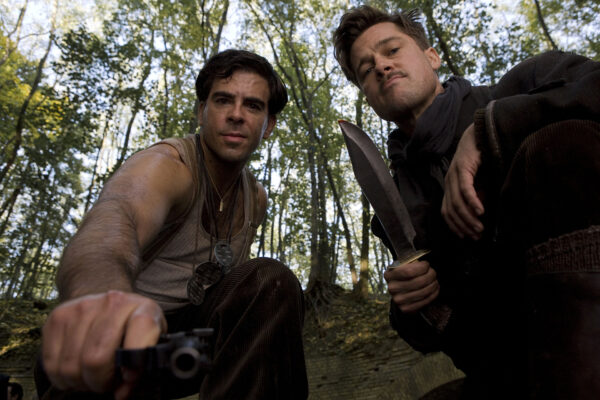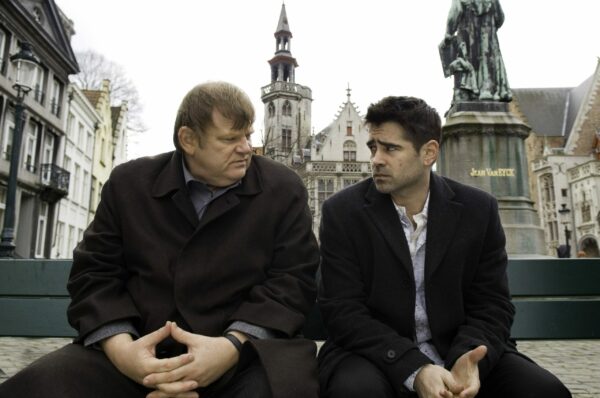
The biggest phenomenon in ’90s Hollywood, Pulp Fiction was the biggest indie hit ever, and made a star of Quentin Tarantino. Via 25 facinating facts, this is the behind the scenes story of a classic movie.
Quentin Tarantino’s generation-defining classic Pulp Fiction changed the Hollywood game on its release in 1994. A black comedy crime film, it tells several interweaving stories of the seedy Los Angeles underbelly and became one of the most influential movies of the decade.
By way of 25 fascinating facts, we bring you the behind the scenes tale of Tarantino’s masterpiece.
1. The famous monologue is partly taken from another movie
The movie is full of iconic lines of dialogue, and one of the most famous is the Biblical quote monologue delivered by Jules (Samuel L. Jackson) – the “Ezekiel 25:17” speech.
However, the dialogue is not actually a quote from the Bible. Tarantino took it from a 1976 Japanese martial arts film starring Sonny Chiba called The Bodyguard. QT didn’t take it word for word, but it’s not far off. Tarantino changed the end which, in The Bodyguard, says:
“And they shall know that I am Chiba the Bodyguard when I shall lay my vengeance upon them!”
Tarantino originally wrote the Ezekiel monologue for From Dusk Till Dawn (1996) – a vampire horror written by him and directed by Robert Rodriguez. In the film, Harvey Keitel plays a preacher and, originally, the passage was to be recited by him to vampires.
The ‘Ezekiel’ monologue with the scroll from The Bodyguard
2. The movie’s famous McGuffin has been the source of a lot of discussion
Pulp Fiction contains one of the most famous movie McGuffins in the famous briefcase that Jules and Vincent (John Travolta) are tasked with retrieving at the start of the movie. We never find out what’s in the briefcase but there’s been all sorts of speculation over the years. People have theorised it contains:
- The diamonds that the gangsters steal in Tarantino’s debut feature Reservoir Dogs (1992).
- The gold suit Val Kilmer wears in True Romance (1993), where he plays Elvis.
- Marcellus Wallace’s soul.
Tarantino, however, put this to rest by saying the contents of the briefcase are, “whatever the viewer wants it to be.”
When Vincent opens the briefcase we don’t see its contents, just the gold shine it emits onto Vincent’s face. To achieve that glow, the briefcase was fitted with a lightbulb and had a battery inside.
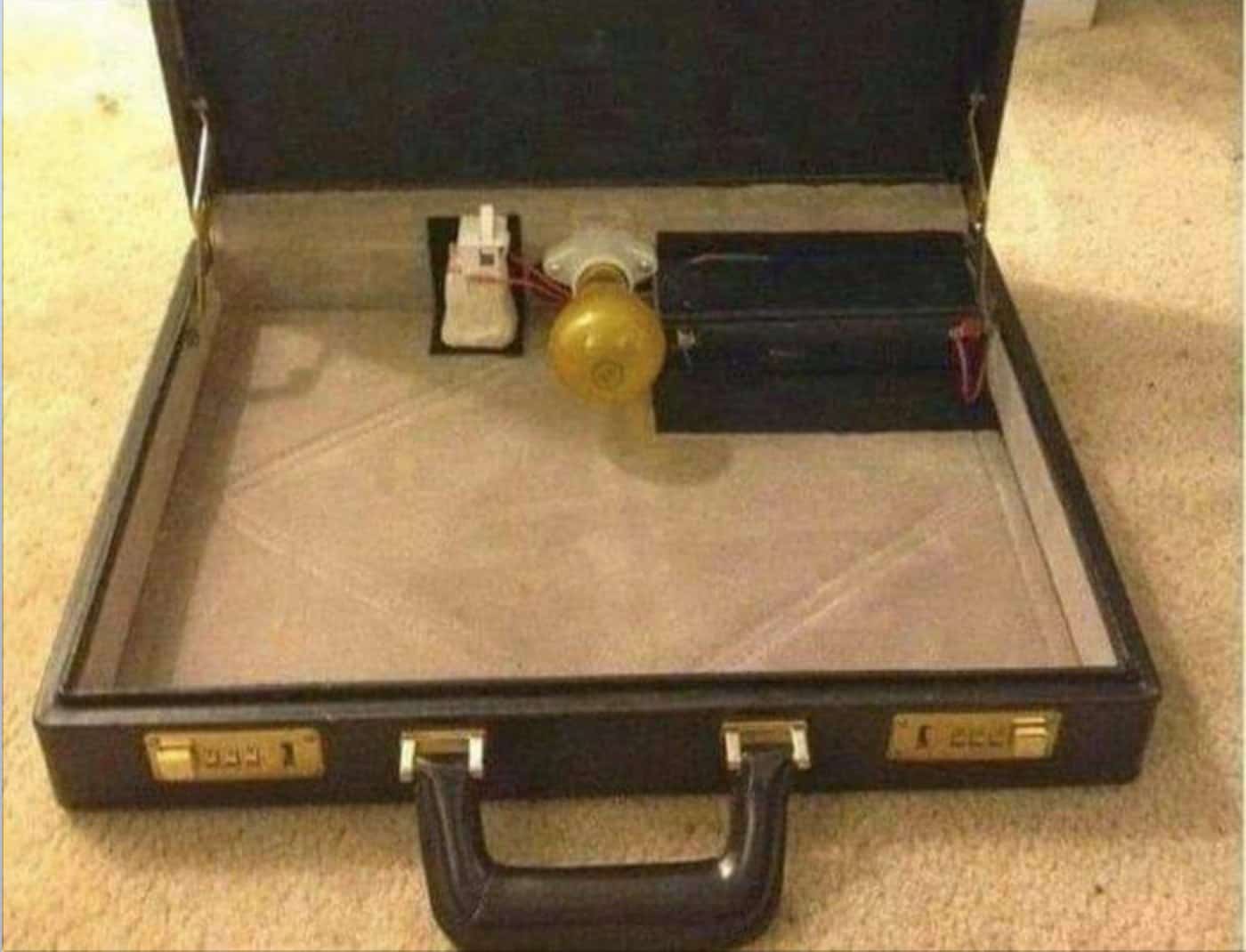
The lightbulb and battery inside the briefcase
3. Uma Thurman was intimidated at the thought of dancing with Travolta
Another iconic moment in the film is the scene where Vincent and Mia Wallace (Uma Thurman) dance together to take part in the Jack Rabbit Slim’s dance contest. Because of his previous turns as Tony Manero in Saturday Night Fever (1977) and Danny Zuko in Grease (1978), Uma Thurman was nervous about dancing with John Travolta, and she said to Tarantino, “you expect me to dance with John f*cking Travolta?!” QT mentioned it to Travolta and he told her to, “just shut up and twist”.
Tarantino didn’t write the part for Travolta, but was very pleased he was cast. He said:
“Everybody thinks that I wrote this scene just to have John Travolta dancing. But the scene existed before John was cast. But once he was cast, it was like, ‘Great. We get to see John dance. All the better.’”
The song that plays during Mia and Vincent’s dance is You Never Can Tell by Chuck Berry. Thurman didn’t like the choice of song and said to QT it didn’t sound right. Tarantino just said, “trust me, it’s perfect.”
Mia and Vincent in the dance contenst
4. Mia and Vincent didn’t actually win the dance contest
After leaving Jack Rabbit Slim’s, Mia and Vincent head back to Mia’s apartment and we see them with a huge trophy, indicating they won the dance competition. However, in a later scene during the segment with Butch (Bruce Willis) we hear a TV in the background. On the TV, a news broadcast is reportin that the dancing trophy from Jack Rabbit Slim’s was stolen. So, Mia and Vincent stole the trophy.
Listen for the TV in the background when Butch walks behind the housese
5. When Mia overdoses, some basic but effective trickery was used
When they return to Mia’s apartment having ‘won’ the dance contest, Mia finds a bag of heroin in Vincent’s coat pocket. Thinking it’s cocaine, she snorts some, and overdoses. Vincent rushes her to his dealer, Lance, to give her a shot of insulin to save her life.
When Vincent finds Mia, she is unconscious and has saliva caked round her mouth. That was actually cold Campbell’s mushroom soup.
Then, the shot of Vincent plunging the syringe into Mia’s chest was filmed by having Travolta pull the needle out, then running the film backwards. Watch carefully and you’ll see a mark on Mia’s chest disappear when she’s revived.
Also, Lance is played by Eric Stoltz. Tarantino was thinking about Stoltz playing either Lance or Jimmy, who Tarantino plays later. He told Stoltz: “There are two parts you can do, and they both wear bathrobes.”
The overdose sequence
6. The bulk of the movie was written in Europe
Tarantino had the idea for Pulp Fiction with a writer friend called Roger Avary. Tarantino and Avary worked together in Video Archives, an L.A. video rental shop.
With the $50k he’d earned for writing and directing Reservoir Dogs (1992), Tarantino went on a 3 month vacation to Amsterdam, and that’s where he wrote Pulp Fiction. We see the Amsterdam influence in the movie Vincent and Jules have a conversation about the differences between McDonald’s and Burger King in the United States and Europe.
The European burger conversation between Vincent and Jules
7. Pulp Fiction contains a lot of Tarantino’s hallmarks
A visual trademark of Taratino is the trunk shot. This is where we see a shot from the point of view of somebody lying in a car trunk. Tarantino uses it in Reservoir Dogs, Jackie Brown (1997), Kill Bill vol.1 (2003), Death Proof (2007), and we also see it in Pulp Fiction when Jules and Vincent take their guns from the car trunk at the start. Tarantino says its not really a trademark and claims, “there’s nowhere else to put the camera!”
Also, Tarantino has a reputation for liking to photograph women’s feet in his films. Again, it’s prevalent in a lot of his movies: Kill Bill vol.1 (2003), Death Proof (2007), Inglourious Basterds (2009) and Once Upon A Time In Hollywood (2019). And also, in Pulp Fiction, where Uma Thurman is barefoot for pretty much every scene she’s in. And there’s a close up of Esmerelda’s – Butch’s cab driver – bare feet, too. And, of course, Vincent and Jules famously have a conversation about foot massages.
Jules and Vincent talk about foot massages
8. Jules and Vincent could have been very different
Nowadays, Samuel L. Jackson and John Travolta as hitmen Jules Winnfield and Vincent Vega seem irreplaceable but, early in the casting process, Tarantino had thought about hiring Tim Roth as Vincent, and Gary Oldman as Jules, re-writing those characters as, “two English guys.”
The final shortlist for Jules included Laurence Fishburne, Eddie Murphy, Charles S. Dutton, and Michael Beach. And Paul Calderon blew Tarantino and producer Lawrence Bender away in his audition as Jules and came within a whisker of being hired, until Jackson came in.
Tarantino has said that Jackson, “doesn’t say my dialogue, he sings it.” He wrote the role of Jules specifically for Jackson after he’d auditioned for Reservoir Dogs a couple of years earlier.
9. Jules’ appearance didn’t work out quite as planned
Jules was originally written to have a giant afro haircut, but the crew member sent out to purchase the wig didn’t know the difference between an afro and jheri curl, and bought a jheri curl wig instead. Jackson tried it on and Tarantino liked it, so it was kept. According to Jackson, “all the gangbangers had Jheri curls.”
10. The movie resurrected John Travolta’s career
Having appeared in successful movies in the late-70s and early 80s – Carrie (1976), Saturday Night Fever (1977), Grease (1978), Blow Out (1981) – John Travolta’s career went a bit into freefall.
The role of Vincent Vega was originally written with Michael Madsen in mind, the idea being he would reprise his role from Reservoir Dogs as Vic Vega – Mr. Blonde. However, Madsen had already signed up to be in Wyatt Earp (1994), directed by Lawrence Kasdan, so couldn’t commit.
Tarantino’s actor shortlist for Vincent Vega included Alec Baldwin, Jason Patric, Andy Garcia, Michael Keaton, Chevy Chase, Sean Penn, and Dennis Quaid. And, Daniel Day-Lewis wanted the role of Vincent Vega, but Tarantino turned him down in favor of Travolta.
Around the same time, Travolta turned down the role of Seth Gecko in From Dusk till Dawn (1996), to be in Pulp Fiction. He explained his decision to QT and said, “Its simple Quentin, I’m just not a vampire.”
Travolta was paid only $100k for playing Vincent, but it revitalised his career. As a direct result of Pulp Fiction, he had a ’90s resurgence and starred in Get Shorty (1995), Michael (1996), Phenomenon (1996), Broken Arrow (1996), and Battlefield Earth (2000).
11. Uma Thurman wasn’t Tarantino’s first choice to play Mia Wallace
When casting Mia, Tarantino also interviewed Isabella Rossellini, Meg Ryan, Daryl Hannah, and Michelle Pfeiffer before considering Uma Thurman. Also, 2 ’90s sitcom stars came very close to getting the role. Julia Louis-Dreyfus turned down the role of Mia Wallace, due to her commitment to Seinfeld, where she played Elaine. And Tarantino himself said that the role in the end came down to two people: Uma Thurman and Jennifer Aniston.
When Tarantino offered Thurman the job, she said no after taking advice from her agent. Tarantino was so desperate to get her that he called her up and read part of the script down the phone – the restaurant scene between Mia and Vincent. And she said yes.
The diner conversation between Mia and Vincent
12. The part of Butch wasn’t written for Bruce Willis
The role of Butch was originally written to be a young, up and coming boxer, and Matt Dillon was in talks to play him. Dillon loved the script and asked Tarantino if he could sleep on it, but Tarantino said no. Tarantino then changed the role to be an older boxer whose best days are behind him. Still, though, Willis wasn’t the first person Tarantino approached. Mickey Rourke passed on the role in order to pursue his real-life boxing career. Rourke said at the time, “the script is nonsense,” but then said later, “to be honest, I didn’t understand it”.
Also on the QT shortlist to play Butch was Sean Penn, Johnny Depp,and Nicolas Cage.
Bruce Willis as Butch
13. Butch’s cab driver was written specifically for the actress who pays her
The scene that really introduces us to Butch is when, having not thrown his boxing match and made a run for it, he ends up in the car of exotic cab driver Esmarelda Villalobos. Esmerelda is played by an actress called Angela Jones, and she was aproached by QT to playy the part. Tarantino saw Jones in a 1991 short film called Curdled where she plays somebody whose job it is to clean up crime scenes after murders. Tarantino’s idea was that, in Pulp Fiction, Esmerelda is a version of that character, which is why she’s so fascinated with death and asks Butch, “what’s it like to kill a man?”
Butch and Esmerelda
14. There are some interesting details relating to the weapons in the movie
One of the most shocking moments in the film is when Butch goes back to his apartment to retrieve his father’s gold watch – he comes across a gun on the worktop and kills Vincent with it when he emerges from the bathroom. It’s an easy mistake to assume that the semi-automatic gun Butch finds is Vincent’s, and he left it there when he went to the bathroom. It’s not, though. It’s Marsellus’ gun. Marsellus and Vincent have been staking out Butch’s apartment and Marsellus has left to get them coffee and doughnuts.
Butch finds Marsellus’ gun
15. Tarantio couldn’t use all of the music he wanted for the movie
One of the most striking elements of Pulp Fiction is its iconic soundtrack. Tarantino used a mix of ’60s rock’n’roll, pop and surf music to create the unique sound the film has. However, there were some tracks Tarantino couldn’t use.
The music that plays when Butch returns to the pawn shop with the Samurai sword is called Comanche, a song by The Revels. Originally, Tarantino wanted to use My Sharona by The Knack for this scene. On the day the studio contacted the band though, The Knack had received an offer from Universal to use the song in a film called Reality Bites (1994). Berton Averre, the guitarist in The Knack, said:
“One offer was for this hip, cool young comedy starring Winona Ryder. The other was for the homosexual rape scene in Pulp Fiction. Hmmm, that is a tough choice.”
The Knack weren’t the only band who turned Tarantino down for the film. He wanted Fabienne to be wearing a ‘Frankie Says Relax’ t-shirt but Frankie Goes To Hollywood said no. Holly Johnson (the singer in Frankie Goes To Hollywood) wrote a letter saying, “the connotation is too negative re the overdose, panic and foul language.”
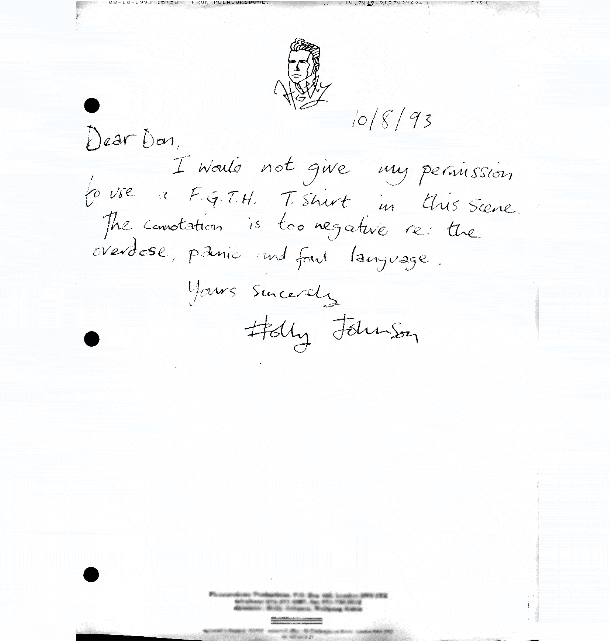
The letter from Holly Johnson
16. Harvey Keitel wasn’t the only person up to play The Wolf
Winston The Wolf is the fixer called in to solve the problem when Vincent and Jules turn up at Jimmy’s (Tarantino) place with Marvin’s dead body. QT knew they needed a big name to play Winston and the shortlist was Harvey Keitel, Warren Beatty, Al Pacino, Danny De Vito, Michael Parks, and Charles S. Dutton.
Tarantino was torn between playing Jimmy here and playing Vincent’s dealer, Lance. He opted for Jimmy because he wanted to be behind the camera for the scene when Vincent gives Mia the insulin shot.
Jimmy and The Wolf
17. Tarantino took inspiration from diverse places
The initial inspiration for Tarantino and Roger Avary’s Pulp Fiction script was a 1963 horror film called Black Sabbath (which is also where the ’70s heavy metal band got their name). Black Sabbath is written in 3 distinctive parts, like Pulp Fiction. They initially called the script Black Mask after a popular crime magazine from the 1920s.
Tarantino said, “I got the idea of doing something that novelists get a chance to do but filmmakers don’t: telling three separate stories and having characters float in and out. The idea was to take the oldest chestnuts that you’ve ever seen when it comes to crime stories and then purposely have them run awry.”
Before Pulp Fiction was released, Tarantino convinced Avary to forfeit his co-writing credit and accept a ‘story by’ credit. That was so the line, ‘Written and directed by Quentin Tarantino’ could be used to promote the film.
In those days, Tarantino knew a script editor who would check all of his screenplays. She’s called Linda Chen, and Tarantino named Amanda Plummer’s character after Chen’s pet rabbit – Honey Bunny. On Tarantino, Chen says, “he’s a functional illiterate, a terrible speller. The first draft of Pulp Fiction was the diary of a mad man.”
That first draft of Pulp Fiction was 500 pages long – which is about 8.5 hours of screen time.
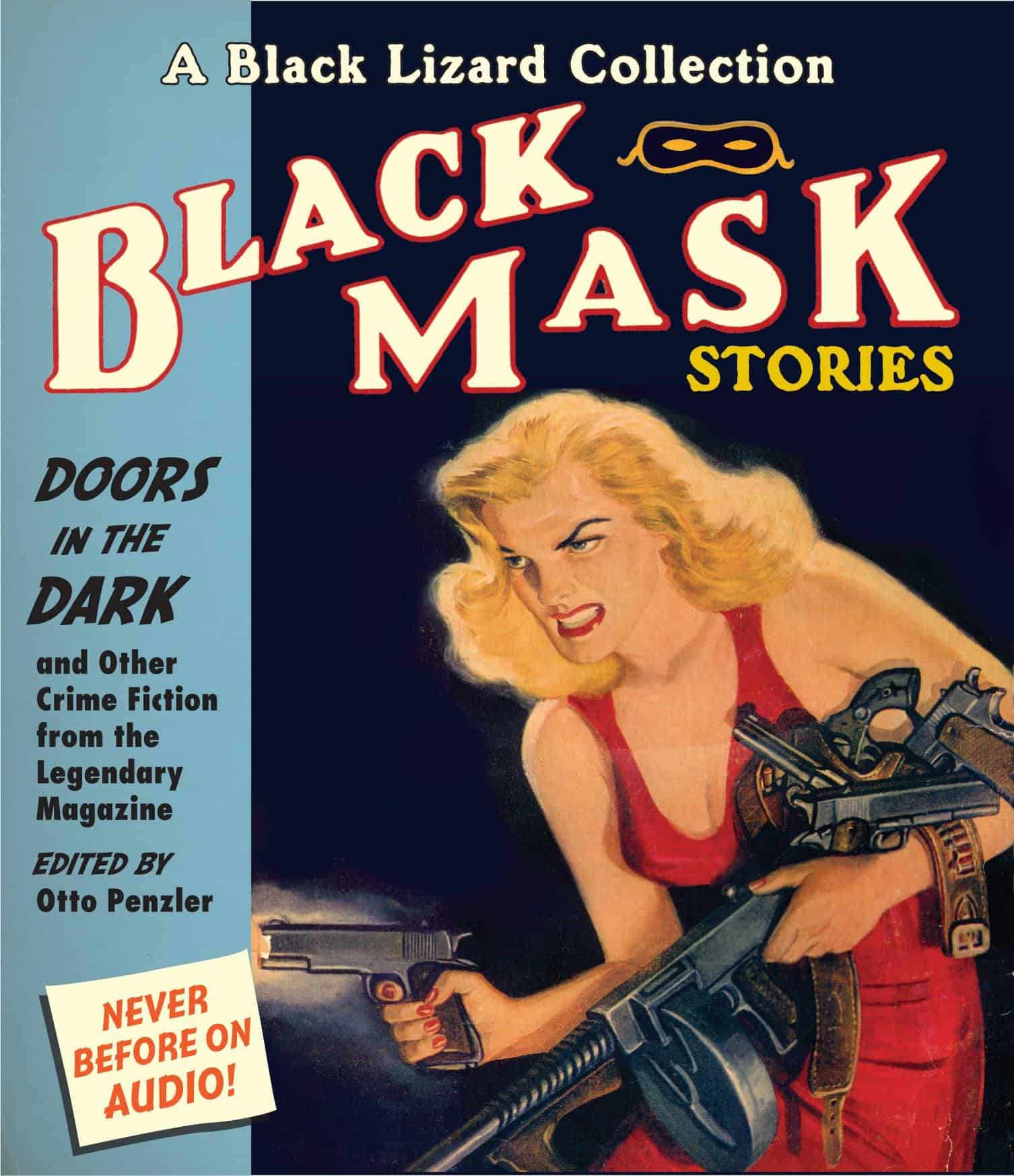
A cover of 1920s pulp magazine, Black Mask
18. The studio were not big fans of the script… at first
The first studio involved in picking up the screenplay was TriStar, who optioned the script before Miramax came on board. Tarantino received feedback on the script from Mike Medavoy – the head of TriStar. Some of his comments were:
- “Too demented.”
- “What’s going on? Someone’s dead and then they’re alive.”
- “The worst thing ever written.”
So, TriStar put the script into turnaround. And every other studio passed, except Miramax.
19. The narrative structure is very unusual
The structure of Pulp Fiction is what Tarantino himself calls, “a circular narrative,” where:
- When Butch and Fabienne drive away on the motorbike, its not the last thing we see in the film, but if the story were told linear, it would be. The first thing we hear in the film is the sound of that motorbike – it plays over the definition of ‘pulp’ we see at the start.
- So the story starts where it ends chronologically and non-chronologically.
The opening scene is the start of the final sequence in the film.
You hear the sound of Butch’s motorbike over the definition of ‘pulp’
20. Pumpkin and Honey Bunny could have been very different
The movie starts and ends with a scene where a criminal couple hold up a diner. They’re called Pumpkin and Honey Bunny, and the parts were written specifically for Amanda Plummer and Tim Roth, who play them in the movie.
In case either couldn’t sign up, though, Tarantino had other actors in consideration.
The shortlist for Pumpkin was Johnny Depp, Christian Slater and John Cusack.
And also in consideration for Honey Bunny was Patricia Arquette, Jennifer Jason Leigh and Marisa Tomei.
The famous opening scene in Pulp Fiction
21. The film starts where it ends
The second time we see Pumpkin and Honey Bunny, there is some overlap between the two segments and we see the end of the opening scene play out again. However, they are slightly different.
In the opening scene, Honey Bunny screams at the diners, “Any of you f*cking pr*cks move, and I’ll execute every motherf*cking last one of ya!”
In the end sequence we see that moment again, but this time she shouts, “Any of you f*cking pricks move, and I’ll execute every last one of ya motherf*ckers!”
This isn’t a mistake – Tarantino did it on purpose. The idea is that the opening scene is told from Pumpkin and Honey Bunny’s point of view. The second time it’s told from Jules’ point of view, and he remembers it slightly differently.
Because it’s told from Jules POV, there’s a deleted scene from this sequence where Jules shoots through the table killing Pumpkin, then turns and shoots Honey Bunny, killing her. It then cuts back to Jules, showing it was all in his mind. Tarantino left this out as he felt it interrupted the pacing and rhythm of the scene.
The end sequence with Jules, Vincent, Pumpkin and Honey Bunny
22. Christopher Walken was almost not cast
In one of the most iconic movie cameos, Christopher Walken appears in one scene to play Captain Koons – Vietnam survivor who visits a young Butch to deliver his father’s gold watch.
Again, Tarantino had a shortlist for the role. He knew that he needed a big presence on the screen, so the list was Tommy Lee Jones, William Devane (from Knots Landing and Marathon Man, 1976), Robert De Niro, William Petersen, and Al Pacino.
Walken drank hot sauce between takes and producer Lawrence Bender assumed it was method acting – Walken’s way of accessing the pain of the character. When he asked Walken about it, though, the actor said, “it just keeps my mouth from drying out.”
Christopher Wlken’s memorable gold watch monologue
23. The film was an instant smash and critical darling
On release of the film, it received an incredible reception from both critics and the public.
Roger Ebert gave the film 4 out of 4 and said, “so well-written in a scruffy, fanzine way that you want to rub in it the noses of those zombie writers who take classes that teach them the formulas for ‘hit films’.”
Ebert also called Pulp Fiction, “the most influential film of the decade.”
Janet Maslin of The New York Times, said: “It is hard to believe that Tarantino, a self-taught talent, has come up with a work of such depth, wit and blazing originality that it places him in the front ranks of American filmmakers. It’s both the hottest and coolest film of the year.”
The Los Angeles Times, though, gave one of the few negative reviews at the time, where Kenneth Turan wrote, “Some sequences, especially one involving bondage harnesses and homosexual rape, have the feeling of creative desperation, of someone who’s afraid of losing his reputation scrambling for any way to offend.”
On Rotten Tomatoes, the film stands at approval rtings of 92% from critics and 96% from audiences. And, on IMDb, Pulp Fiction has a huge score of 8.9/10, which places it at number 8 in the IMDb top 250 movies of all time.
24. The film was a Cannes phenomenon
Pulp Fiction premiered at the Cannes Film Festival in May 1994. It was unveiled at a midnight screening and caused a sensation, winning the Palme d’Or, the festival’s biggest honour.
Then, a few months later, Tarantino won Best Original Screenplay at the Oscars.
QT collects his Academy Award or Best Original Screenplay
25. There could have been a Pulp Fiction prequel
Mr. Blonde in Reservoir Dogs (1992) is the alter-ego of Vic Vega, played by Michael Madsen. And Vic is the brother of Vincent Vega, played by John Travolta in Pulp Fiction. Tarantino named them after the singer Suzanne Vega and there’s a deleted scene where Vincent tells Mia that Suzanne Vega is his cousin.
Also, Tarantino had a spin-off film idea that would have been called “Double V Vega”. It would have been a prequel to both Pulp Fiction and Reservoir Dogs and been set in Amsterdam. Though Tarantino said it never really got past the idea stage.
A compilaiton of deleted scenes, including where Vincent tells Mia he’s related to Suzanne Vega
So, there you have it – the making of a modern classic by way of 25 fascinating facts. Please share on your social platforms, and listen to our podcast on Pulp Fiction, here.


